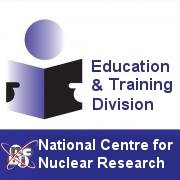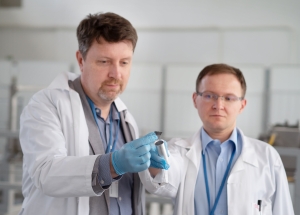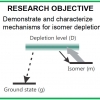Isotope energy storage?
2018.09.07 13:53 - Marek PawłowskiResearch work with metastable isotope of rhenium-186m has started in National Centre for Nuclear Research. Half-life of this isomer is approx. 200 thousand years, but it can be forced into a fast decaying nuclear state, which releases a much greater energy in its decay than the energy required to initiate the process. Because of this property, rhenium nuclei can be a viable energy storage. This research in Świerk will be funded by U. S Army Research Laboratory (ARL).
The problem of energy storage affects many aspects of our life – from global power industry, through transport, space exploration, and even nanorobotics. The largest challenge is to find a way to store as much energy inside as small volume and mass as possible.
Theoretically, atomic nucleus is a perfect energy storage device. Energy, that was accumulated in the uranium nuclei as a result of natural processes, is used today in nuclear power plants. However, uranium or plutonium is a fuel type, not a storage device, and nuclear reactors are “large”. That’s why Polish physicists are looking for new ways to store and obtain energy from atomic nuclei. A promising idea is to use long-lived metastable nuclei. It has been known for a long time that some atomic nuclei can be excited to a long-lived quantum state – with half-life as long as hundreds or millions of years – in which they can maintain the excitation energy. The act of quantum excitation doesn’t have a good equivalent in everyday life. With very little precision, one can say that parts of the nucleus – after receiving the excitation energy – are beginning to oscillate, or rotate (because high spin – quantum equivalent of angular momentum – characterizes those excited, metastable nuclei). A nucleus in a metastable state can be “convinced” to release the excitation energy which it has stored. The only thing we need to do is to deliver another portion of energy, so that is excites to a much more unstable state. It works a bit like a ball stuck in a pit on top of a mountain: if we push it slightly, it will escape the pit and roll down the mountainside, and at the end it will achieve the energy we used to push it to the top.
One of the most promising candidates for isotope batteries is rhenium 186-m. Half-life of this isomer is about 200 thousand years, and the amount of energy released in the process of de-excitation is about 150 keV. What that means, is that 1 gram of rhenium 186-m holds approx. 30 kWh of energy: as much as a common car battery in electric cars! Theoretically, this isomer can be a very attractive source of energy, but first we need to know how to charge and discharge such “battery”. Research on this topic will be conducted in National Centre for Nuclear Research and will be funded by U. S Army Research Laboratory.
“We will be researching the possibility of acquiring rhenium 186-m using specifically designed targets and irradiating them inside Maria research reactor. ” – explains Rafał Prokopowicz, PhD, from Reactor Research and Technology Division. “We want to research and optimize the effectiveness of this isomer’s production in our reactor. Maria is a great tool for this purpose, because the construction of our reactor allows for many different radiation conditions.”
“The project is an effect of an earlier cooperation of NCBJ and ARL, among other institutions” – adds Jacek Rzadkiewicz, PhD, director of Reactor Research and Technology Division, head of the project. “Thanks to this collaboration we managed to conduct an experiment, during which release of energy stored inside an isomer of molybdenum 93 was observed for the first time. An article about this experiment was published at the beginning of this year in Nature. While applying for the current grant, we have received extraordinary support from J. J. Carroll, PhD, from ARL, who visited us this week to celebrate the inauguration of the project and will cooperate with us during the time of the project. Our work is planned for the next 12 months and is not restricted to reactor research. The results will be important for basic research as well. By analysing the ratio between rhenium ans osmium in the universe, astrophysicists can draw interesting cosmological conclusions about evolution and nucleosynthesis. Characteristics of rhenium 186-m isomer, with a half-life of 200 thousand years, are important for those analyses, and we are going to study them as precisely as possible. Therefore, our project is a model for how a border between application and basic research is sometimes hard to define, especially in the field of nuclear physics.”



















